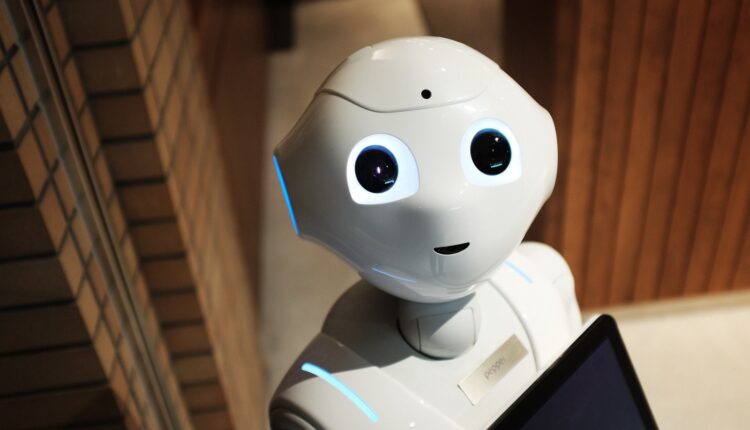The Future Of Technology Robotics: What You Need To Know
Robotics are becoming more and more important in today’s economy. They are used in a wide variety of industries, from manufacturing to healthcare to food services. What is Robotics? Robotics are machines that are controlled by software, and they can be divided into two main groups: industrial and service robots. Industrial robots are designed for use in production lines, while service robots are often used in the healthcare and hospitality industries. What Does This Mean For You? As a business owner, it is important to understand the implications of robotics on your industry. The future of robotics is not just about jobs – it’s about creating new opportunities for businesses across the board. If you want to stay ahead of the curve, you need to start learning more about robotics now. In this blog post, we will explore five ways that technology is changing the future of robotics, and what you can do to prepare for its arrival.
What is Robotics?
Robotics Technology is a rapidly growing field that is seeing incredible advancements in terms of capabilities and application. Robotics technology has the ability to operate with precision and speed, making it an ideal tool for various industrial and commercial applications. By understanding the basics of robotics technology, you can better appreciate the future prospects of this field.
What is Robotics Technology?
Robots are machines that are able to autonomously carry out specific tasks. They are composed of sensors, actuators, and control systems that allow them to interact with their surroundings. Robotics technology has been around for many years, but its recent advances have made it one of the most promising fields in technology.
What are the Benefits of Robotics Technology?
One of the main benefits of robotics technology is its ability to automate tasks. This can save time and money for businesses and organizations. In addition, robots can be customized to meet specific needs. This makes them an ideal choice for a variety of applications, including manufacturing, logistics, security, and healthcare.
What Are Some of the Challenges Associated With Robotics Technology?
One significant challenge associated with robotics technology is its reliance on computerized systems. If these systems are damaged or compromised, robots may become unusable. Additionally, robots often require training before they can be used effectively. These challenges will need to be overcome if we want to see widespread adoption of this technology in the future
History of Robotics
Robots are a relatively new technology, and their history is largely shrouded in mystery. It’s not clear when or where they originated, or who was the first to create them. What is known is that they’ve been around for quite some time and have played an important role in various industries.
One of the earliest references to robots dates back to 350 B.C., when the Greek historian Herodotus described a automaton called The Ctesibius. The device could move its arms and head independently, and it was said to be able to play music and sculpt objects.
In 1642, mathematician Isaac Newton developed the first crude form of artificial intelligence when he designed a machine that could move around on its own and respond to commands. However, this machine was never built, so it’s difficult to know exactly how it would have worked.
The first practical robot was created by Russian engineer Ivan Pavlov in 1927. He designed a contraption that could be controlled by ringing a bell (a conditioning procedure known as gestalt psychology was later used with this robot).
Today, robots are widely used across many different industries. They’re often used in manufacturing plants to perform tasks such as welding, cutting metals, and assembling parts. They’re also used in medical settings to assist doctors with surgeries and procedures, as well as in research labs where they’re used for tasks such as testing new products or machines.
Types of Robotics
Types of Robotics
Robotics technologies come in a variety of forms, each with its own benefits and drawbacks. Here are the three most common types of robotics: industrial, medical, and service robotics.
Industrial Robotics: These robots are typically used in manufacturing settings to carry out tasks such as moving parts around or assembling products. They are usually very reliable and efficient, but they can be expensive to buy and maintain.
Medical Robotics: Medical robots are designed specifically for use in healthcare settings. They can perform a wide variety of surgical tasks, monitor patients on bedside monitors, and more. While they have proven to be effective at helping reduce hospital costs, they have yet to catch on among doctors as a mainstream tool for treatment.
Service Robotics: Service robots are designed to do simple tasks such as cleaning up after humans or delivering food. They are often cheaper than industrial or medical robots and can be trained to do specific tasks quickly and easily.
How Robotics is Used in the Future
Robots are used in a variety of ways in the future. One way is for companies to use them to help with manufacturing and assembly lines. They can also be used to help with health care and other areas where it is important to have precision and accuracy.
Conclusion
As robots become increasingly commonplace in our everyday lives, it is important to be aware of the implications that this will have on society. Some experts believe that robotics will eventually lead to mass unemployment, while others are more optimistic and see them as a way to help us achieve more efficient and effective work habits. As we begin to explore the future of technology robotics, it is important to stay up-to-date on the latest developments so that you can make informed decisions about how these technologies will impact your life.
